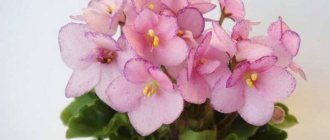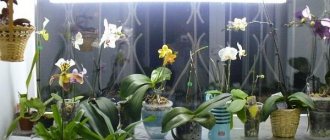Each flower has its own meaning. Gerbera is no exception. This is a plant with a beautiful inflorescence decorated with many petals. Why should you choose a gerbera, what does it mean, what meaning does it carry? You will get an answer to this question by reading our article.
Gerbera is a universal flower. It is suitable as a gift for people with whom the giver has different relationships. This could be a beloved woman or relative, friend or work colleague. In the language of flowers, such a plant means a smile and a good mood. It can also act as a symbol of flirting. At the same time, the gerbera is endowed with mystery and reticence.
To clearly convey feelings and wishes, you need to choose the right gerberas by color:
- Red - to express passionate love;
- Pink - to young women with wishes of joy;
- Yellow - for a gift that can attract good luck;
- Orange - as a symbol of well-being in all areas of life;
- White is the choice for a wedding bouquet or for innocent girls;
- Dark, rich tones - for a gift to an adult, accomplished woman.
How do they grow?
Beautiful gerberas can be grown from seeds or from cuttings of older plants. They love to bathe in bright sunlight and grow especially well in sandy soil. It’s great that gerberas can be grown both in the garden and in a pot on the windowsill - the flower is quite resistant to heat and winter cold.
The diameter of the flower can vary from 2.5 cm for decorative potted varieties to 12 cm for the most outstanding specimens. On average, the flower is quite large and reaches 7-10 cm in diameter.
Combined with other colors
Often, prefabricated bouquets include gerberas; the meaning of the flower is taken into account, but only in general. These plants give joy, good luck, warmth, and they are so diverse in appearance that florists prefer to choose them when composing original bouquets.
Gerberas look harmonious:
- With recognized beauties - roses;
- In bouquets with alstroemerias and orchids;
- With sunflowers, brassica;
- Surrounded by bush chrysanthemums;
- Combined with delicate tulips, etc.
If a mono-bouquet is assembled from gerberas, then the florists of the online store “Moods” try to get creative with the choice of inflorescences by shade:
- Red with pink - you get a charming composition that can be presented to your beloved girl;
- Yellow, orange, deep pink - a bouquet that can cause many smiles with a selection of bright colors;
- One color – stylish compositions for gifts for various occasions, selected for a specific woman.
Floristry masters experiment with flower design, choosing different packaging materials: craft, mesh, felt, etc. They add volume to bouquets with the help of various greenery: ruscus, fern, pistachio, etc. As a result of skillful work, compositions are obtained that enchant with their beauty. And it’s worth choosing bouquets that include these wonderful flowers, because with their help it’s easy to evoke positive emotions.
Photo
Check out the photos of yellow gerberas below:
Separately, you can familiarize yourself with other types of this plant. Read about the Jameson gerbera, as well as varieties with white, orange, red and pink flowers.
Watering
It is extremely dangerous to water a flowerpot with cool water on hot summer days. Hypothermia of the root system will lead to dangerous diseases. In addition, the soil should not dry out. If it is waterlogged, then the root rosette begins to rot. In addition, nematodes - parasitic roundworms, which are almost impossible to get rid of, can settle in wet soil. The main secret of caring for indoor gerbera at home lies in the correct technology for watering it, namely:
- It is necessary to pour on the outer walls of the container so that the liquid does not fall on the roots;
- Spray exclusively the leaves every day, because flowers, unfortunately, cannot withstand such water treatments;
- use a pallet. To do this, it is filled with liquid. After 30 minutes, the remaining water is poured out.
Read also: How to deliciously salt fresh frozen pink salmon
Some gardeners advise increasing watering frequency in two cases: during the heating season (the air is too dry) and at the end of February. After all, the beginning of March is a period of active growth of the stem and buds.
To water flowers you need to use settled water. To do this, fill a bottle with liquid and leave it in the kitchen for a day, because it’s warm there. Then the water temperature will not be lower than 20 degrees.
Planting soil (transplantation)
The soil should be light, and therefore slightly acidic. Experts do not recommend using compost or humus as fertilizer. You can make nutrient soil yourself. To do this, you need to mix the following components:
- two parts of deciduous soil;
- 1 part peat;
- one part of sand or sphagnum moss;
- filler consisting of expanded clay and pine bark.
The most important condition is that the root rosette should protrude from the ground 1.5-2 cm higher. Transplantation should be carried out during the dormant period, when it does not bloom. Otherwise, you can disturb its natural biory class=”aligncenter” width=”600″ height=”415″[/img] If such a beauty was given to the owner of a blooming plant, then there is no need to rush to replant it. In a small pot it can grow well for a long period.
It is recommended to replant gerberas in early spring or late winter. To do this, you can take a clay pot, the diameter of which is 2-3 cm larger than the previous one. This will allow it to bloom faster.
Diseases and pests
Like all indoor plants, red gerbera can get sick (read about the most common diseases of gerbera and how to combat them in this material). The reason for this may be improper maintenance of the flower.
- Alternaria blight .
The disease is fungal in nature. The leaves of the plant become covered with brown spots, which lighten over time. In some cases, the disease may only manifest itself as yellowing of the leaves. In conditions of constant excess moisture, the stains become covered with a dark coating. Attention : The weaker the gerbera, the higher the likelihood of developing the disease. - Gerbera mosaic . Caused by the cucumber mosaic virus. The main symptom is the appearance of yellow-green spots of different sizes and shapes on the leaves. Infection occurs through insects, such as aphids.
- Sclerotoniasis . Caused by a fungus. It appears in the form of depressed spots on the surface of leaves covered with a light coating. The fungus can survive in the soil for a long time.
- Powdery mildew . Another type of fungal disease, to which young plants are most susceptible. A grayish coating appears on the leaf petioles, develops and covers the entire plant. Without timely intervention, the gerbera inevitably dies.
- Late blight . It manifests itself in the form of gradual drying of leaves, first from the outside and then from the inside. Then the roots begin to rot.
- Gray rot . A light coating affects the inflorescences and leaves of the plant. The disease spreads through soil and water.
- Aphid . It sucks the juices of the plant and multiplies at high speed. Spider mite Forms a thin web, capable of entwining the entire flower.
- Whitefly larvae . They feed on plant sap throughout their development.
If your favorite flower does not bloom or its leaves suddenly turn yellow, do not worry. The following publications will help you solve the problem:
- Why do indoor gerbera leaves turn yellow and how to cure it?
- Why do gerberas not bloom and how to fix it?
Description of gerbera
Gerbera is a perennial herbaceous plant belonging to the Asteraceae family. There are several dozen species, most of them grow in South Africa and Madagascar. The rhizomes of the plant are branched and well developed. The leaves have an elongated (up to 35 cm) structure, pointed, collected in a basal rosette. Peduncles do not have leaves, are tall (up to 60 cm). The flowers look like a solar disk with rays of petals of various shades - from white to dark red.
According to the type of inflorescence, gerberas are divided into three types:
- Simple ones, similar to an ordinary daisy, have one row of petals.
- Terry, like an aster with many small tongues.
- Semi-double - flowers with small petals in the middle and larger tongues along the edge.
In size, flowers can be small with a diameter of up to 10 cm and large - up to 30 cm. Also, plants can have different leaf shapes: narrow, wide or medium.
In mid-latitudes, gerberas can bloom in open ground flower beds throughout the summer (from June to August). In winter, they are dug up and transplanted into pots. Under indoor conditions, the plant can delight with flowering almost all year round, since the dormant period lasts only a couple of months.
Story
The unusual flower was first discovered in the 18th century by Dutch travelers. And in 1737, the botanist Jan Gronovius began studying and describing it. He named the new plant after his friend Traugott Gerber, a naturalist who studied herbs. Another version claims that the name of this genus of plants comes from the Latin “herba”, which means “grass”.
Later, in 1884, these plants were found in South Africa by Scotsman Robert Jameson. Since then, the cultivation of these plants began. Breeders from just two wild species, Jameson's gerbera and green-leaved gerbera, have developed many varieties of various shades. The most common today are “Romeo”, “Peter”, “Veronica”, “Pluto”.
Legend
There are many legends associated with gerberas. One of them says that there lived a beautiful angel in heaven. One day, flying over the earth, he saw a girl in a sunlit meadow. She picked flowers and sang a wonderful song. The girl was so beautiful that the angel's heart trembled and he fell in love. Then he collected stars from the sky into a bouquet and scattered them over the meadow where his beloved loved to walk. Coming here again, she saw scatterings of bright flowers of various shades. The girl clapped her hands with joy. And the angel smiled sadly, looking at her from above... Since then, gerberas have become a symbol of sincere joy and declaration of eternal love.
According to another common legend, the gerbera is one modest, beautiful nymph who was so tired of unwanted attention that she turned into a simple wildflower. But people saw nobility in the unassuming plant. And it began to express sincere joy, carefreeness and eternal youth.
Reproduction
Gerberas are propagated by:
- Seeds . It is of great importance for breeders, as it allows you to grow gerbera with the desired characteristics. Seeds germinate in about one month. They are planted in moist, loose soil, sprinkled with earth. Then cover with film. Open periodically and spray with water. When small sprouts with leaves appear, transplant them into pots. It takes about ten months before flowering. Not all amateur flower growers have enough time for this, so more often gerberas are propagated vegetatively.
- By cuttings . For cuttings, you need to provide heating, high humidity, and use phytohormones. A small cutting with a small stem (a couple of centimeters) and leaves is cut from an adult gerbera. After planting, cover with film, ventilate, and moisten. Remove the film at the beginning of active growth.
- Dividing the bush . Free the gerbera from the ground, divide the root system into several separate ones and plant it in the ground.
More nuances about gerbera propagation can be found here.
Yellow gerbera is considered a rather capricious plant, requiring the creation and maintenance of a certain microclimate. But if you wish, it is not difficult to adhere to the rules and provide comfortable conditions for the growth of such an amazingly beautiful flower, replant it in time, and treat it. In return, gerberas will please the eye and give joy.











